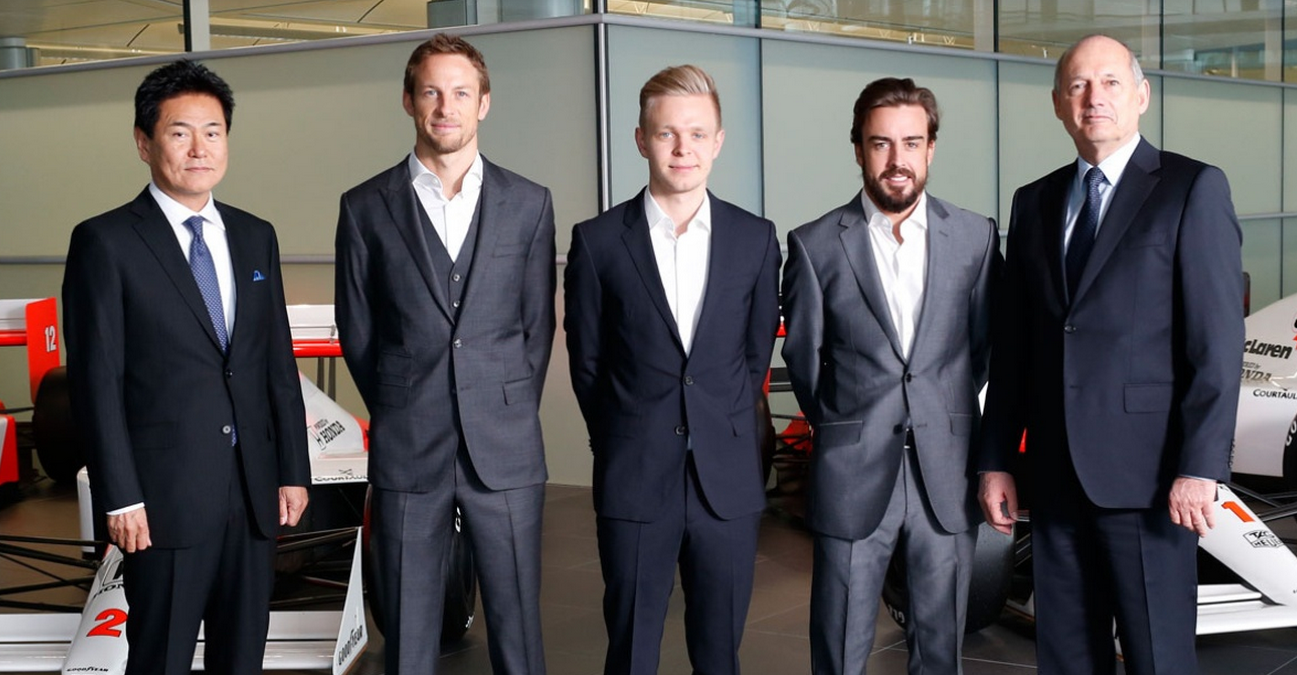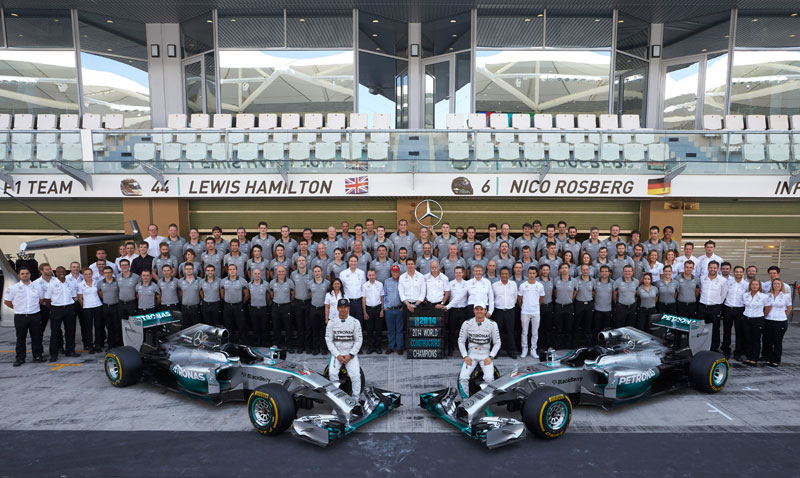The first test of 2015 in Jerez didn’t really tell us much, so all eyes are on Barcelona this week as we try to get a better feel for the state of play between the teams. There’s a special focus of course on the form of the McLaren-Honda MP4-30, given how few miles it has completed so far.
Fifty years ago, February was very different for the top teams and drivers of the day, and instead of occupying themselves with testing in Spain they were already in the middle of a busy racing programme on the other side of the world. However, while the schedule included a couple of Grands Prix, the races didn’t actually count for the World Championship. And the cars that took part used were almost, but not quite, built to F1 specification.
In the 1960s the Tasman Series was one of the highlights of the motor racing season. The greatest stars of the era would spend the first two months of the year trekking around New Zealand and Australia. Over the years, the likes of Brabham, Lotus, and Ferrari all sent works teams, while Frank Williams used the series as one of his early undertakings as an entrant. And, perhaps most significantly, it also saw the first steps of the McLaren team.
There had long been some major off-season races in the Antipodes, and Stirling Moss was a regular star guest. By 1963 the entry lists had began to fill with big names of the day, with the likes of Graham Hill and John Surtees taking part. However, it wasn’t until 1964 that the Tasman Series was officially born, and there was a title at stake.
The impetus for it came in large part from the on-going overseas success of the local drivers. Jack Brabham and Bruce McLaren were two of the biggest names in the sport, and Denny Hulme and Chris Amon were starting to find international success. The Tasman Series allowed their home fans to see them in action against the best of their rivals.
In 1964, I was a devoted motor sport fan, still a few years away from making my way as a journalist.
Each week of a cold English winter I would wait for Autosport and Motoring News to bring Tasman news from some exotic sun-drenched venue. I knew that come March/April I could see those same stars in action in the non-championship F1 races in the UK, but, much like the Australian GP today, that still seemed like a long wait!
It wasn’t just about the racing, as the Tasman Series had a social side to it too. In those days drivers spent a lot more time together simply because the travelling circus was smaller, and there were fewer demands on their time once practice or qualifying ended. When ‘down under’, things seemed to step up a notch, because everyone was so far from their families, and had so much spare time. Reading the columns of McLaren insider Eoin Young in the pages of Autocar, it seemed that life on the Tasman trail was one long party for all concerned, with tales of scuba diving, water skiing and even the odd cricket match. It really did sound like fun…
The Tasman Series followed a familiar pattern each year – four races in New Zealand, followed by four events in Australia. There were no transporters, so the cars moved around on trailers towed by locally-sourced Ford or Holden estate cars. The schedule had a great deal of geographical logic to it, which was just as well, given the huge driving distances involved. Sometimes I look at the current F1 schedule and wonder whether it was created with the same sort of precision…
The action began on New Zealand’s North Island. The opening round was usually at Pukekohe, not far from Auckland, an event that always carried the prestigious New Zealand GP title. Next stop was Levin, close to Wellington. Moving to the South Island the series then took in Christchurch’s Lady Wigram air base, and finally Invercargill’s Teretonga Park. After that the cars were shipped to Australia, and the drivers had a free weekend before action resumed.
The schedule of the Aussie leg was a little more flexible, but it usually began with Warwick Farm (a swanky horse racing venue in the Sydney suburbs), followed by Lakeside (near Brisbane) and Sandown Park (close to Melbourne). Then there was another boat trip to Tasmania and the awesome and very dangerous Longford road circuit. In contrast to New Zealand, the tracks took turns to use the Australian GP title.
There were two major differences to F1 events – the Tasman rules allowed for 2.5-litre engines rather than the 1.5-litre units of the time, and races were only 100 miles in length, which meant that the cars needed a lot less fuel capacity.
The home heroes were keen to take part in the first series in 1964, so Brabham entered a pair of cars for himself and Hulme. McLaren was determined to follow suit, but was not able to persuade his Cooper team to take part. He came to the conclusion that instead he would enter and run a pair of cars himself – as a customer of Cooper. Two cars were duly built in Surbiton, with the second earmarked for the promising American youngster Timmy Mayer, who was managed by older brother Teddy.
The cars were entered under the name ‘Bruce McLaren Motor Racing Ltd,’ and they carried a little Kiwi badge, designed by renowned motor racing artist Michael Turner. It was to be a campaign of triumph and tragedy for the team. Bruce achieved a lifetime’s ambition when he won his home Grand Prix at Pukekohe, and further victories at Lady Wigram and Teretonga gave him the momentum to clinch the title, and, despite some bad luck in the Australian rounds, he logged the first major success for the McLaren team.
Sadly, the talented Timmy Mayer lost his life in a practice crash in the final race at Longford. After a period of reflection his brother Teddy decided to remain involved in the McLaren team, and, as we all know, he would go on to play a pivotal role in its history
Bruce returned to the Tasman Series in 1965, and again he had an American team mate – albeit one with far more experience than Mayer. He managed to convince Phil Hill to head over from California, and the presence of the 1961 World Champion gave the still-new McLaren operation some extra credibility. Bruce had a new chassis, built for the 4-cylinder Climax FPF engine rather than the V8 used previously, and gave his old car to Hill.
One drawback was that McLaren had switched to Firestone tyres. It was the company’s first foray into European-style racing, and initially all it had available were 15-inch Indycar tyres. It took some time to adjust to them, although he still managed a pair of second places to Jim Clark in the NZ races. Everything came together and Bruce won the final race at Longford, which also happened to be the Australian GP that year. The race thus went down in history as Firestone’s maiden ‘Grand Prix’ win, although the company’s first World Championship success did not come until Monza 1966, with Ferrari.
Busy with other projects, Bruce did not compete in the Tasman series in 1966 or 1967, when the 2.5-litre rules remained in force as F1 went to 3-litres capacity. However he returned in 1968, and this time without the extra burden of having to run his own team. When discussing a deal to run a BRM engine in F1 in 1967 he had agreed to do the following January’s New Zealand races for the works team. It seemed like a good idea the time, but it was one he came to regret.
He was hugely disappointed in the P126 and especially in the 2.5-litre version of the V12, which appeared to produce a lot fewer horses than the optimistic Bourne management had claimed. The first three races were disappointing, and he was plagued by fuel system and clutch problems, as well as a general lack of performance, and the races were dominated by Chris Amon’s works Ferrari 246T, and Clark’s Lotus 49T.
At Lady Wigram, the latter’s car appeared in the white, red and gold colours of a cigarette brand that had signed a deal with Colin Chapman. It was the first overt sponsorship deal of its kind, and Bruce was intrigued, writing in Autosport: “Let’s not forget that advertising contacts are going to bring new life to motor racing, along with extra finance, and instead of being on the verge of a slump, I reckon we’re just entering an even bigger and brighter boom period for the sport.” As usual, Bruce could see the big picture…
At a soaking wet Teretonga, a lack of brute power proved to be just the ticket for the BRM. The morning heat brought disappointment for Bruce when a jammed throttle caused him to go off the road and damage the front of the car. It was repaired for the main event, and after various incidents ahead – including a rare spin for Clark – Bruce duly won the race. He didn’t contest the Australian rounds, and in fact Teretonga proved to be his last Tasman start.
However the McLaren name was still represented as privateer Piers Courage was racing his own F2 M4A in the series. On paper he didn’t have much chance against the big names, but when it rained at Longford the irrepressible young Brit scored a historic victory for the McLaren marque, much to Bruce’s delight.
Sadly, the days of the Tasman Series were numbered. In 1969 there was still a good entry, with Amon again in a Ferrari, Jochen Rindt in a Lotus, and Courage in a Frank Williams-run Brabham. However, costs were rising and it was becoming harder to attract an international field, and in 1970 the series lost its international flavour and began a move to F5000 rules.
By then, I was making my way as a journalist, although initially my usual stomping grounds were Brands Hatch or Snetterton, and alas I never did make it to a Tasman race. However, I would soon get to know Eoin Young, and over the years of our friendship I heard all the war stories first hand. For that brief period in 1964-’69 the Tasman Series really did justify its unofficial billing as the ‘winter World Championship.’ I just wish I could have been there to see it!

